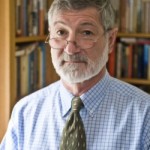- 26 Jan, 2016
- 0
- Ira Helfand, M.D. Nuclear
- PeaceVoice
Ticking toward doomsday
AVAILABLE FOR REPRINT. Copy and use freely. Please help PeaceVoice by notifying us when you use this piece: PeaceVoiceDirector@gmail.com

“Recently, the Bulletin of the Atomic Scientists announced it was keeping its famous Doomsday Clock at three minutes to midnight. In making this decision, their panel of experts, including 16 Nobel Laureates, cited the growing danger of nuclear war.
The danger of nuclear war?”
Author: Ira Helfand, M.D.
Published in: Quad City Times http://qctimes.com/news/opinion/ticking-toward-doomsday/article_7cef36f6-aacf-5e7e-8b9c-e9876a351c94.html
Counterpunch http://www.counterpunch.org/2016/01/27/ticking-toward-doomsday/
Huntington News http://www.huntingtonnews.net/128476
Las Vegas Informer http://lasvegas.informermg.com/2016/01/26/ticking-toward-doomsday/
Transcend Media Service https://www.transcend.org/tms/2016/02/ticking-toward-doomsday/
Sierra County Prospect http://www.sierracountyprospect.org/2016/01/26/ticking-toward-doomsday-12716/
Newberry Observer http://newberryobserver.com/opinion/editorials/4823/ticking-toward-doomsday
The PeaceWorker http://peaceworker.org/2016/02/put-the-threat-of-nuclear-war-back-on-your-radar/?utm_source=February+22%2C+PeaceWorker+Articles&utm_campaign=This+Week%27s+PeaceWorker+Articles&utm_medium=email
Date: January 26,27,29,February 17,2016,2016
745 Words:
For the full article:
Ticking toward doomsday
745 Words
By Ira Helfand, M.D.
Ticking toward doomsday
By Ira Helfand, M.D.
745 words
Recently, the Bulletin of the Atomic Scientists announced it was keeping its famous Doomsday Clock at three minutes to midnight. In making this decision, their panel of experts, including 16 Nobel Laureates, cited the growing danger of nuclear war.
The danger of nuclear war?
For most people today, the threat of nuclear war isn’t even on their radar screens. It needs to be.
When the Cold War ended most of us started to act as though the danger of nuclear war had gone away. It didn’t. There remain in the world today some 15,000 nuclear war heads, 95 percent in the arsenals of the US and Russia. More than 2,000 of these warheads are on hair-trigger alert. They are mounted on missiles that can be launched in 15 minutes. And all nine counties that possess nuclear weapons are actively modernizing their arsenals at a cost of hundreds of $billions.
For the last quarter century we have been told we don’t need to worry about these weapons. The US and Russia weren’t enemies anymore and they would never be used. The recent conflicts in Ukraine and Syria and the irresponsible nuclear saber rattling by both sides have shown us how hollow these assurances are. There is a real danger that some crisis could spiral into direct conflict between the US and Russia.
We also have to worry about the possibility of accidental nuclear war. On at least five occasions since 1979 either Moscow or Washington prepared to launch nuclear war in the mistaken belief that it was already under attack.
So what happens if these weapons are used? A 2007 study showed that if even 300 Russian warheads got through to targets in US urban areas, 75 to 100 million people would be killed in a half-hour and the entire economic infrastructure that the rest of the population depends on would be destroyed.
If all of the weapons the US and Russia maintain on high alert were involved in the war, the firestorms they started would put 150 million tons of soot into the upper atmosphere creating a new Ice Age in a matter of days. Temperatures around the world would drop an average of 14 to 15 degrees. In the interior of North America and Eurasia, the temperatures would drop up to 50 degrees. Ecosystems would collapse, food production would stop and the vast majority of the human race would starve.
Even a much more limited nuclear war, as might take place between smaller nuclear powers like India and Pakistan would be a worldwide catastrophe. The fires from “just” 100 “small” nuclear weapons in their arsenals would cause enough climate disruption to cut global food production and trigger a famine that would put some two billion people at risk.
Fortunately, there is a growing movement around the world to ban and eliminate these weapons. The International Red Cross/Red Crescent movement has voted unanimously to educate people around the world about the dangers of nuclear war and to work for the abolition of these weapons. The World Medical Association and the American Medical Association have taken a similar stand.
Physicians for Social Responsibility and our global federation the International Physicians for the Prevention of Nuclear War have launched a worldwide campaign, the International Campaign to Abolish Nuclear Weapons that brings together hundreds of thousands of people in nearly 500 organizations in 95 countries.
More than 140 countries have called for a new treaty to close the gap in international law which still does not prohibit possession of these weapons, and the United Nations will convene an Open Ended Working Group next month in Geneva to explore ways to negotiate such a treaty and report back to the UN General Assembly in the fall.
All of these efforts are designed to pressure the nuclear weapons states to sit down and negotiate a detailed, verifiable, enforceable agreement to dismantle their weapons under international supervision.
This process will not be easy. But we have no other choice. We have been incredibly lucky to avoid nuclear war since Hiroshima. Hoping for continued good luck is simply not an acceptable nuclear policy.
The US has not been part of this effort, and has actually tried to block it. It is time to change course. America needs to lead this movement as our highest national security priority and the candidates running for President need to make it clear that they will indeed lead the way to a world free of nuclear weapons.
~~~~~~~~~~~~~~~
Ira Helfand, syndicated by PeaceVoice, practices internal medicine at an urgent care center in Springfield, MA. He is a Past President of Physicians for Social Responsibility and is currently the Co-President of International Physicians for the Prevention of Nuclear War, the 1985 Nobel Peace Laureate.
© 2023 PeaceVoice
peacevoice